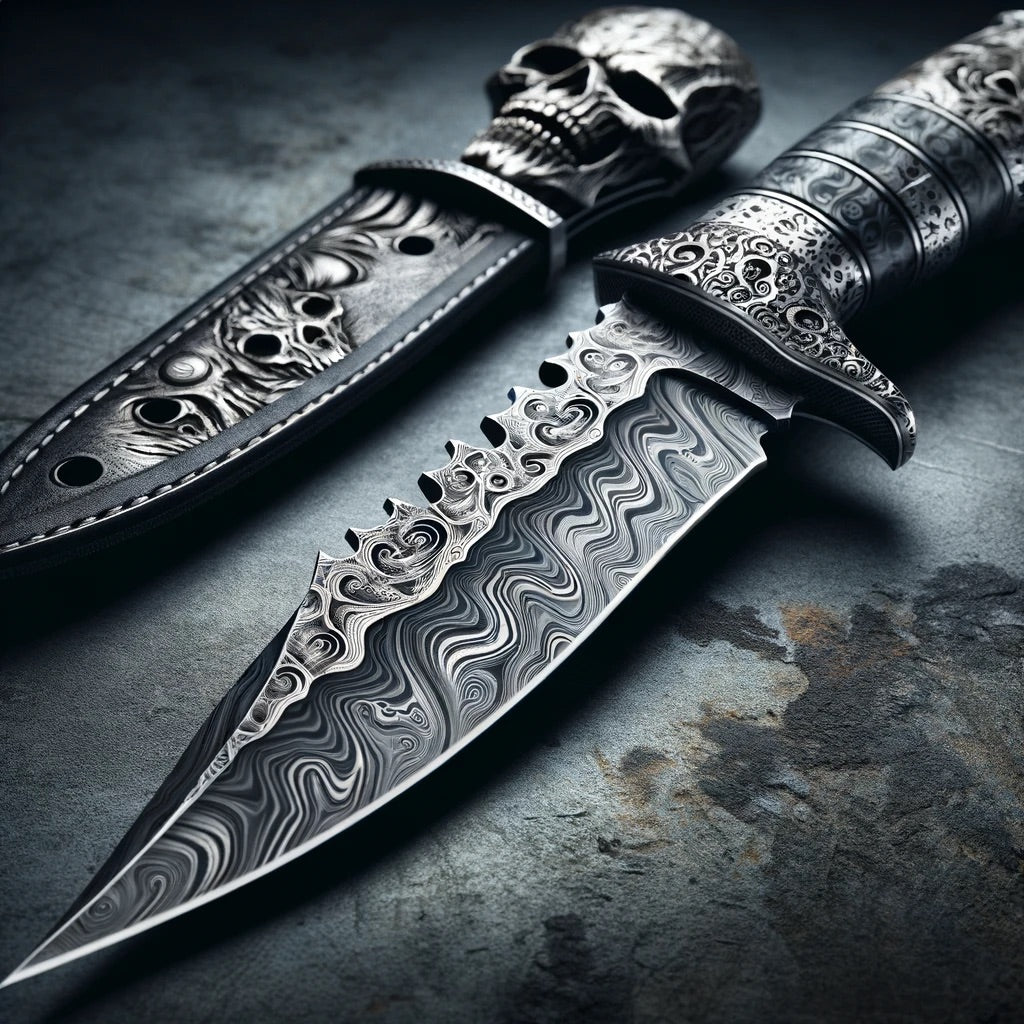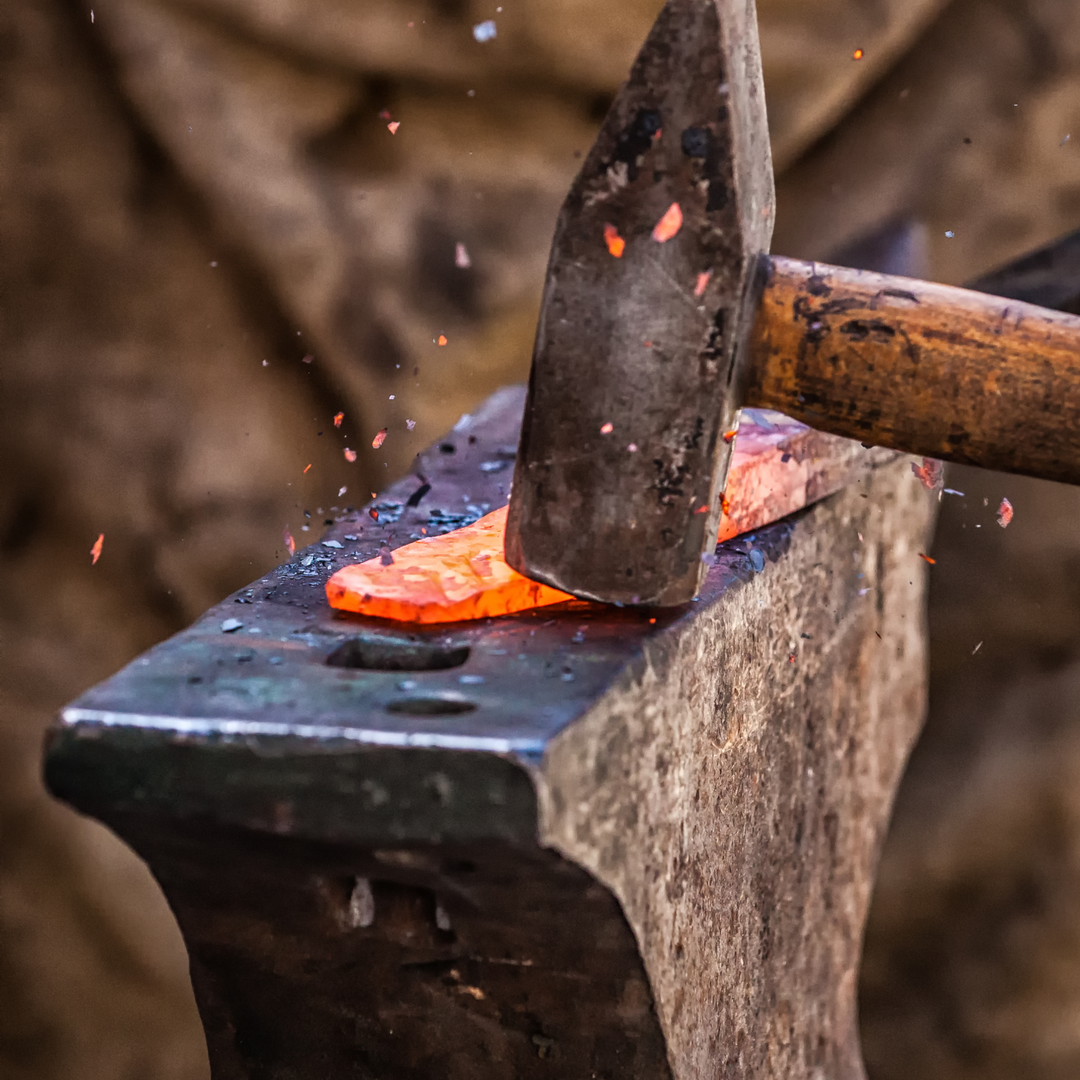The Mystique of Damascus Blades: A Blend of History and Craftsmanship
Introduction
The allure of Damascus steel, with its distinctive wavy patterns and legendary toughness, has fascinated warriors, blacksmiths, and collectors for centuries. Originating from the ancient city of Damascus, these blades have become synonymous with quality and beauty, bridging the gap between ancient craftsmanship and modern-day artistry.
History of Damascus Blades
The tale of Damascus blades begins in the Near East, their name derived from Damascus, Syria, where some of the finest swords were made in the ancient world. These blades were not only prized for their exceptional sharpness and strength but also for their unique patterns, reminiscent of flowing water. The original method of creating Damascus steel, involving forging together layers of iron and steel, was a closely guarded secret that faded into obscurity, turning these blades into stuff of legends.
Characteristics of Damascus Steel
Damascus steel is instantly recognizable by its intricate, wavy patterns, a testament to the skill of the blacksmiths who forge each piece. This pattern is not merely decorative but is a result of the varied carbon levels in the different types of steel used, contributing to the blade’s flexibility, strength, and unparalleled edge retention. The traditional process of making Damascus steel involved a method known as pattern welding, a technique that is both an art and a science, ensuring that no two Damascus blades are ever the same.
The Making of Damascus Blades Today
Modern Damascus steel mirrors the aesthetics of ancient blades, though the materials and methods have evolved. Today, blacksmiths use a variety of high-carbon steels, layering them to create the desired pattern. This contemporary take on an ancient process involves repeatedly folding and forging the metal, a painstaking task that imbues each blade with its unique character.
Types of Damascus Blades
Damascus steel is no longer limited to the battlefield. In the kitchen, chefs covet Damascus knives for their sharpness and durability. Outdoorsmen prize these blades for their resilience and versatility. Beyond utility, Damascus steel finds its way into the hands of collectors and enthusiasts, who admire these pieces as much for their aesthetic appeal as for their historical significance.
Caring for Damascus Blades
Maintaining a Damascus blade requires attention to detail. Regular cleaning, careful sharpening, and proper storage are essential to preserve its beauty and functionality. While Damascus steel is renowned for its durability, it is also prone to rust if not cared for properly, making maintenance a crucial aspect of ownership.
The Appeal of Damascus Blades
The appeal of Damascus blades lies in their unique blend of artistry, history, and performance. Each piece tells a story, from the hands of the blacksmith to the hands of the owner, making it more than just a tool but a piece of heritage. In a world of mass-produced items, the individuality and craftsmanship of Damascus steel stand out, offering a connection to the past and a testament to the skill of the artisans who create them.
Conclusion
Damascus blades embody the spirit of ancient craftsmanship, brought to life by modern masters. Their enduring legacy, combined with their unparalleled utility and beauty, ensures that they remain sought after by collectors, chefs, and enthusiasts around the world. In the dance of carbon and steel, the Damascus blade continues to be a symbol of excellence, a blend of form and function that transcends time.
Introduction
The allure of Damascus steel, with its distinctive wavy patterns and legendary toughness, has fascinated warriors, blacksmiths, and collectors for centuries. Originating from the ancient city of Damascus, these blades have become synonymous with quality and beauty, bridging the gap between ancient craftsmanship and modern-day artistry.
History of Damascus Blades
The tale of Damascus blades begins in the Near East, their name derived from Damascus, Syria, where some of the finest swords were made in the ancient world. These blades were not only prized for their exceptional sharpness and strength but also for their unique patterns, reminiscent of flowing water. The original method of creating Damascus steel, involving forging together layers of iron and steel, was a closely guarded secret that faded into obscurity, turning these blades into stuff of legends.
Characteristics of Damascus Steel
Damascus steel is instantly recognizable by its intricate, wavy patterns, a testament to the skill of the blacksmiths who forge each piece. This pattern is not merely decorative but is a result of the varied carbon levels in the different types of steel used, contributing to the blade’s flexibility, strength, and unparalleled edge retention. The traditional process of making Damascus steel involved a method known as pattern welding, a technique that is both an art and a science, ensuring that no two Damascus blades are ever the same.
The Making of Damascus Blades Today
Modern Damascus steel mirrors the aesthetics of ancient blades, though the materials and methods have evolved. Today, blacksmiths use a variety of high-carbon steels, layering them to create the desired pattern. This contemporary take on an ancient process involves repeatedly folding and forging the metal, a painstaking task that imbues each blade with its unique character.
Types of Damascus Blades
Damascus steel is no longer limited to the battlefield. In the kitchen, chefs covet Damascus knives for their sharpness and durability. Outdoorsmen prize these blades for their resilience and versatility. Beyond utility, Damascus steel finds its way into the hands of collectors and enthusiasts, who admire these pieces as much for their aesthetic appeal as for their historical significance.
Caring for Damascus Blades
Maintaining a Damascus blade requires attention to detail. Regular cleaning, careful sharpening, and proper storage are essential to preserve its beauty and functionality. While Damascus steel is renowned for its durability, it is also prone to rust if not cared for properly, making maintenance a crucial aspect of ownership.
The Appeal of Damascus Blades
The appeal of Damascus blades lies in their unique blend of artistry, history, and performance. Each piece tells a story, from the hands of the blacksmith to the hands of the owner, making it more than just a tool but a piece of heritage. In a world of mass-produced items, the individuality and craftsmanship of Damascus steel stand out, offering a connection to the past and a testament to the skill of the artisans who create them.
Conclusion
Damascus blades embody the spirit of ancient craftsmanship, brought to life by modern masters. Their enduring legacy, combined with their unparalleled utility and beauty, ensures that they remain sought after by collectors, chefs, and enthusiasts around the world. In the dance of carbon and steel, the Damascus blade continues to be a symbol of excellence, a blend of form and function that transcends time.






Leave a comment